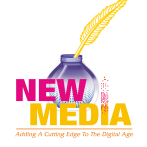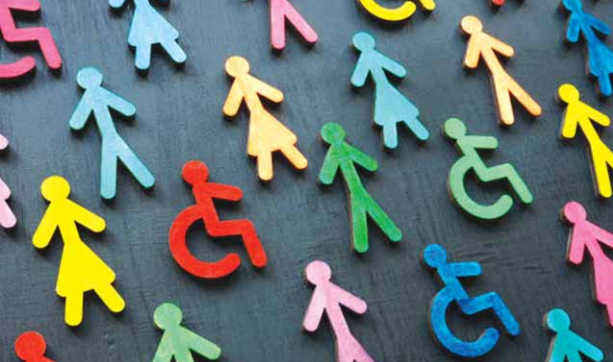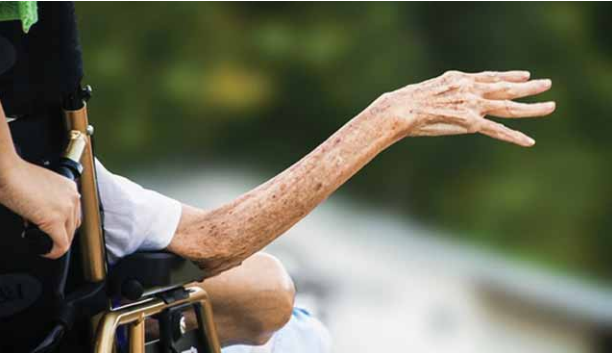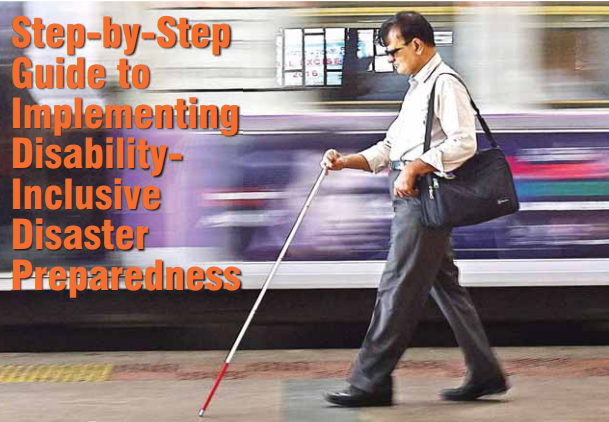Disasters don’t discriminate – but preparedness often does. Around the world, persons with disabilities face unique challenges in times of crisis, from inaccessible evacuation routes to communication barriers in emergency alerts. Yet, amidst these challenges, innovators are rising to the occasion, creating inclusive solutions that ensure no one is left behind. Our Cover Story explores the evolving landscape of disability-inclusive disaster management, spotlighting groundbreaking innovations and addressing the persistent gaps that need urgent attention. As climate change and global crises grow more frequent, building resilience means embracing diversity in preparedness. Let’s dive into the strategies shaping a safer, more inclusive future for all.
In an era of escalating climate crises, pandemics, and geopolitical instability, the world is awakening to a stark reality: disasters do not discriminate, but their impacts do. For the estimated 1.3 billion people living with disabilities—roughly one in six people globally—the stakes are disproportionately high. Mortality rates for persons with disabilities during disasters can be two to four times higher than for the general population, a grim statistic that underscores a long-standing failure to prioritize inclusivity in disaster management. Yet, amid this sobering backdrop, a quiet revolution is underway. From grassroots advocacy to cutting-edge technology, global efforts to integrate disability-inclusive disaster preparedness and response are gaining momentum. This cover story delves into the innovations driving change, the challenges that persist, and the lessons gleaned from recent disasters that could shape a more resilient future.
The Global Landscape: Trends in Disability-
Inclusive Disaster
Management
The past decade has seen a seismic shift in how the world approaches disaster risk reduction (DRR). The Sendai Framework for Disaster Risk Reduction 2015–2030, a landmark United Nations agreement, explicitly calls for the inclusion of persons with disabilities as active stakeholders in DRR policies and practices. This framework, paired with the United Nations Convention on the Rights of Persons with Disabilities (CRPD), has spurred governments, NGOs, and communities to rethink preparedness and response through an inclusive lens. The numbers tell a compelling story: 16% of the global population lives with a disability, with 80% residing in the Global South, where climate-related disasters are intensifying. This demographic reality has fueled a push for universal design, accessible early warning systems, and community-led initiatives.
One notable trend is the rise of disability-led organizations taking center stage. Groups like the Partnership for Inclusive Disaster Strategies in the United States and the Pacific Disability Forum in Asia-Pacific are not just advocating for change—they’re driving it. These organizations emphasize “nothing about us without us,” ensuring that persons with disabilities shape the policies and tools meant to protect them. Another trend is the integration of technology: from sign language-enabled emergency alerts in Jordan to apps that map accessible evacuation routes in Australia, innovation is bridging gaps that once seemed insurmountable. Yet, for every step forward, systemic barriers—poverty, inaccessible infrastructure, and a lack of disaggregated data—threaten to stall progress.

Case Study 1: The 2022 Pakistan Floods—A Test of Resilience
In mid-2022, Pakistan faced one of its worst natural disasters in decades as monsoon rains submerged a third of the country, displacing millions and claiming over 1,700 lives. Among the hardest hit were persons with disabilities, many of whom lived in rural, flood-prone areas with limited access to resources. A report from the International Disability Alliance highlighted a stark disparity: while early warning systems saved countless lives, inaccessible communication channels—such as radio broadcasts without sign language or text alternatives—left deaf and visually impaired individuals stranded.
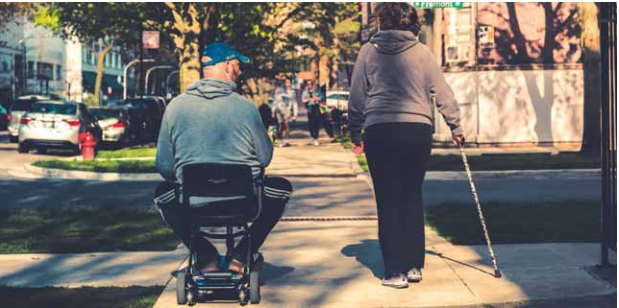
Yet, amid the chaos, a glimmer of innovation emerged. Local disability organizations, supported by international partners like CBM Global, mobilized to distribute accessible aid kits tailored to diverse needs: wheelchairs for mobility-impaired individuals, braille instructions for the blind, and hearing aids for the deaf. In Sindh province, community volunteers trained in disability-inclusive evacuation protocols helped evacuate over 200 persons with disabilities from flooded villages. This grassroots response showcased the power of preparedness, but it also exposed gaps: only a fraction of affected communities had such support, and post-disaster recovery efforts largely overlooked accessibility, leaving rebuilt homes and shelters unusable for many. The Pakistan floods underscored a dual truth—small-scale innovation can save lives, but without systemic integration, it’s a drop in the ocean.
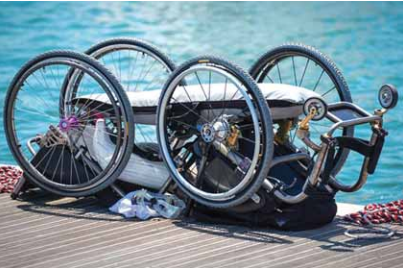
Case Study 2: Australia’s Black Summer Bushfires-Lessons in Collaboration
The 2019–2020 Black Summer bushfires in Australia, which scorched over 18 million hectares and displaced thousands, offered another lens into disability-inclusive disaster management. For persons with disabilities, the fires posed unique challenges: smoke inhalation exacerbated respiratory conditions, evacuation routes were often impassable for wheelchair users, and emergency shelters lacked basic accommodations like ramps or quiet spaces for those with sensory sensitivities.
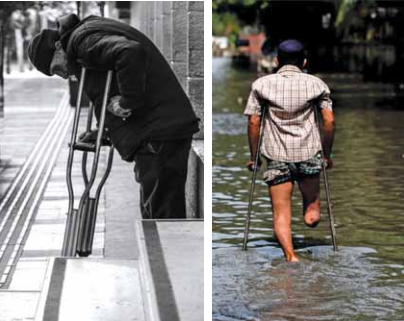
Enter the Person-Centred Emergency Preparedness (P-CEP) toolkit, a pioneering initiative co-developed by the University of Sydney and disability advocates. Launched prior to the bushfires, P-CEP empowered individuals to assess their own capabilities and needs, from securing backup power for medical devices to identifying support networks. During the crisis, disability service providers in New South Wales used P-CEP to coordinate with local emergency managers, ensuring that at least 60% of surveyed individuals with disabilities had tailored evacuation plans—double the national average at the time. The toolkit’s success lay in its emphasis on self-advocacy, but its reach was limited by awareness and funding. Post-fire analyses revealed that while urban areas benefited, rural communities—where disability prevalence is higher—remained underserved, highlighting the urban-rural divide as a persistent challenge.
Innovations on the
Horizon
Across the globe, creative solutions are redefining what preparedness looks like. In Japan, a leader in disaster resilience, the government has piloted AI-driven early warning systems that adapt to individual needs—delivering voice alerts for the visually impaired and vibrations for the deaf. In Bangladesh, the World Bank has funded evacuation shelters built with Universal Design principles, featuring ramps, tactile signage, and wider doorways, benefiting not just persons with disabilities but also the elderly and pregnant women. Meanwhile, virtual reality training programs in the Philippines are equipping emergency responders with simulations of assisting individuals with diverse impairments, fostering empathy and practical skills.
These innovations signal a shift from reactive to proactive planning, but scalability remains a hurdle. High costs, limited political will, and a lack of disability-disaggregated data—crucial for targeting resources—often confine these projects to pilot stages. As one advocate in Tuvalu noted, “We can build the tools, but if no one knows who needs them, they’re useless.”
The Challenges Ahead
For all the progress, the road to a truly disability-inclusive world is fraught with obstacles. The 2023 UNDRR Global Survey on Persons with Disabilities and Disasters painted a sobering picture: 84% of respondents lacked a personal preparedness plan, and 86% had no role in community DRR decision-making, despite 57% expressing willingness to participate. Accessibility remains a glaring issue—shelters, transportation, and information systems are still designed with able-bodied users in mind. In low- and middle-income countries, where resources are stretched thin, disability inclusion often takes a backseat to immediate survival needs.
Systemic discrimination compounds these challenges. Unemployment and poverty, disproportionately high among persons with disabilities, limit their ability to prepare—how do you stockpile supplies with no income? Moreover, the voices of those with cognitive or psychosocial disabilities are often sidelined, even within inclusive frameworks, perpetuating a cycle of exclusion.
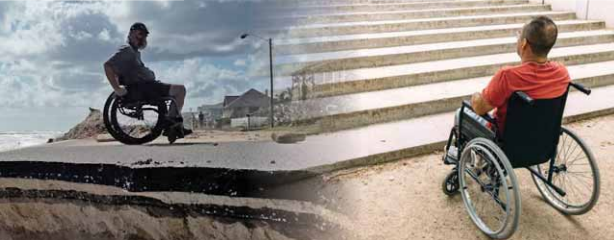
A Call to Action
The innovations and case studies of today offer a blueprint for tomorrow, but they demand action on a grand scale. Governments must prioritize disability-disaggregated data to map vulnerabilities accurately. Emergency planners must embed Universal Design into infrastructure from the outset—retrofitting is costlier and less effective. Communities must amplify disability-led voices, recognizing lived experience as expertise. And globally, we must bridge the gap between commitment and implementation, turning the Sendai Framework’s promises into tangible outcomes. As the frequency and intensity of disasters rise, so too does the urgency of this mission. A world prepared isn’t just one with stronger levees or better forecasts—it’s one where no one is left behind. For the 1.3 billion people with disabilities, that promise is long overdue. The question now is whether we’ll rise to meet it.
